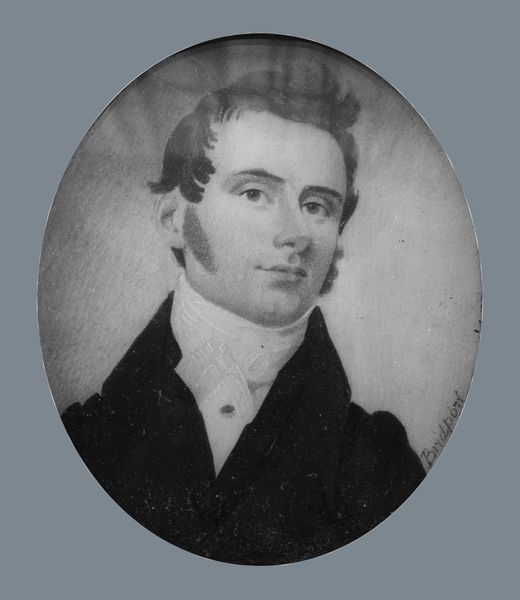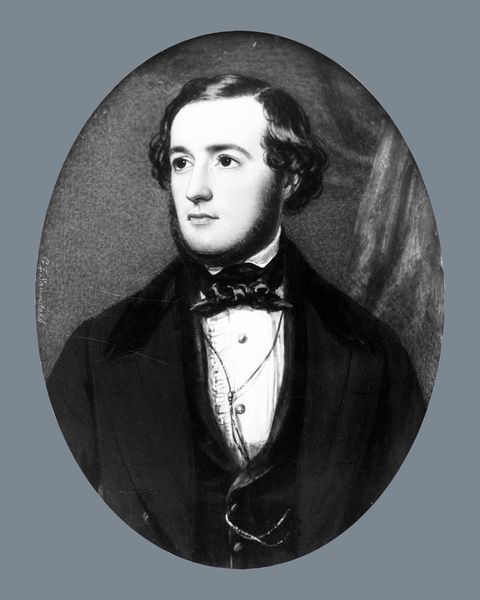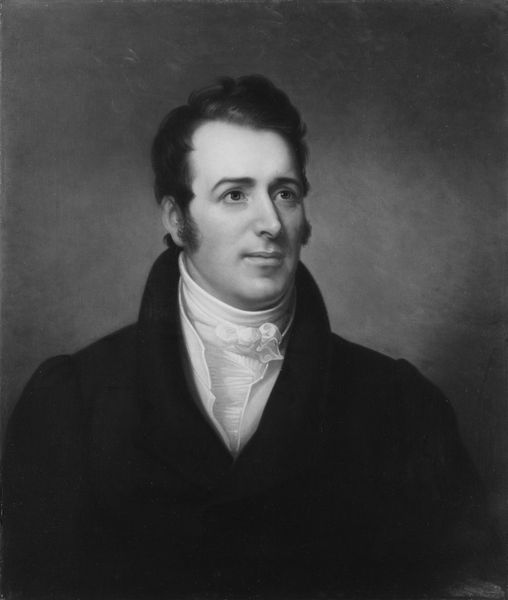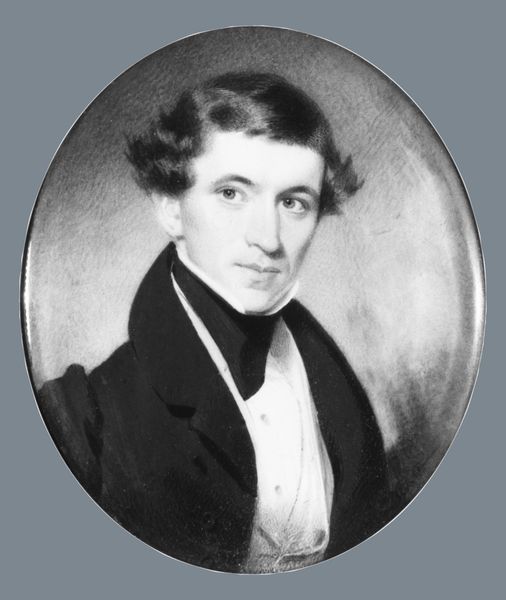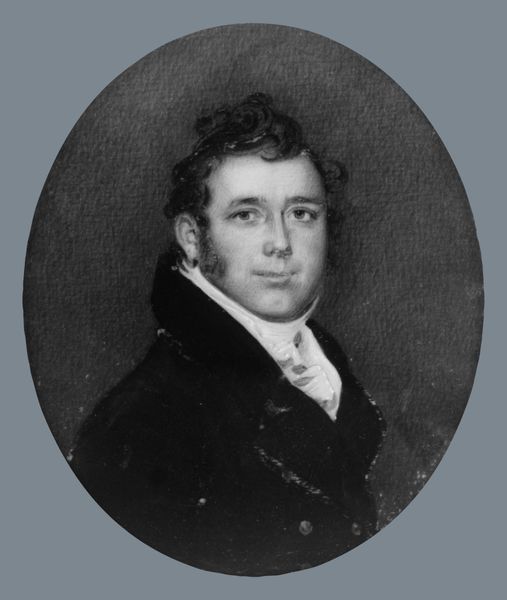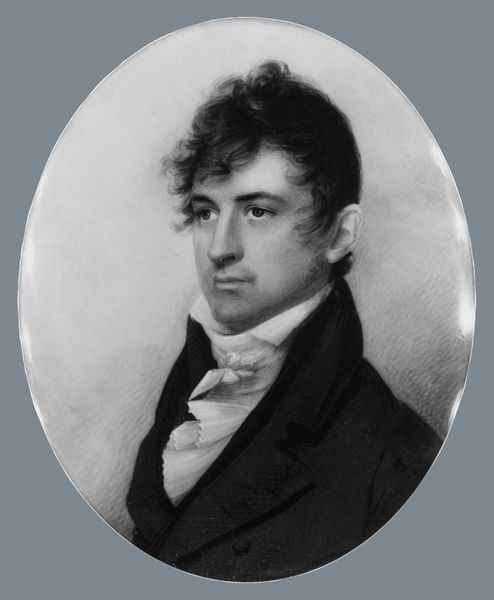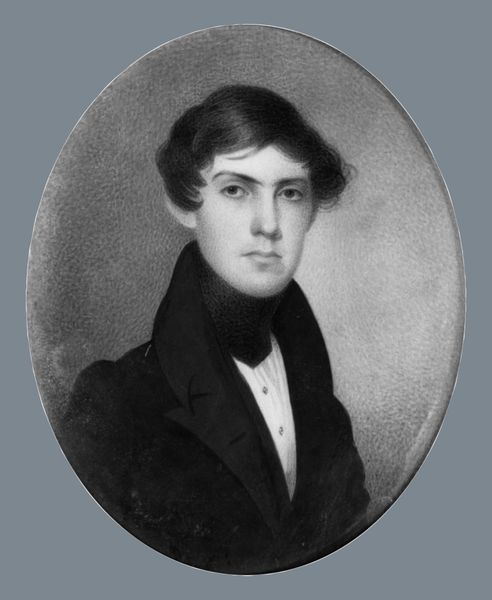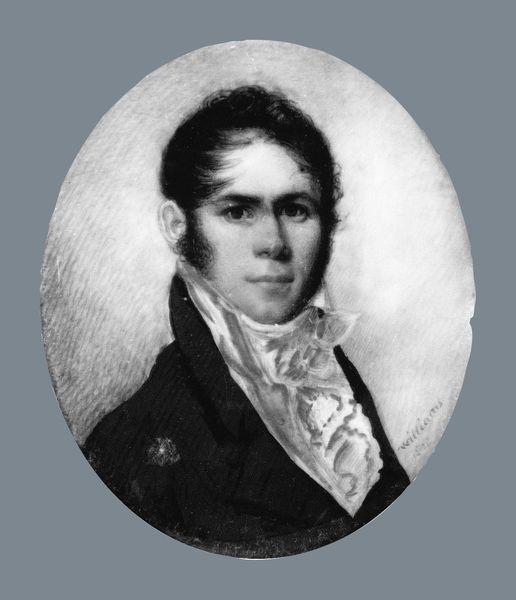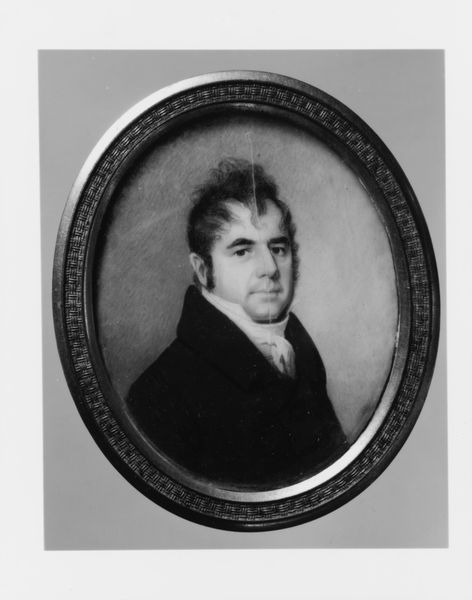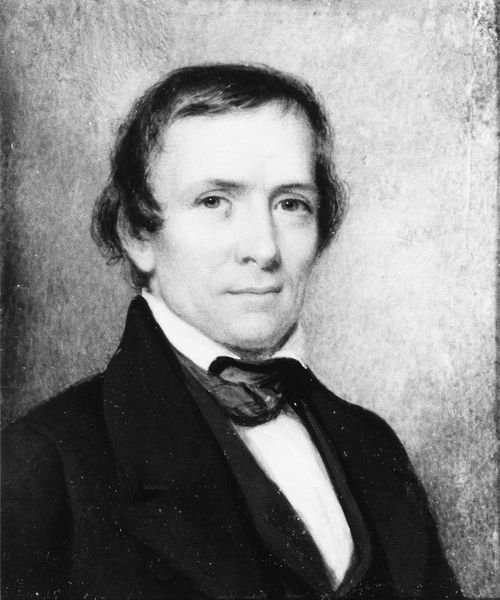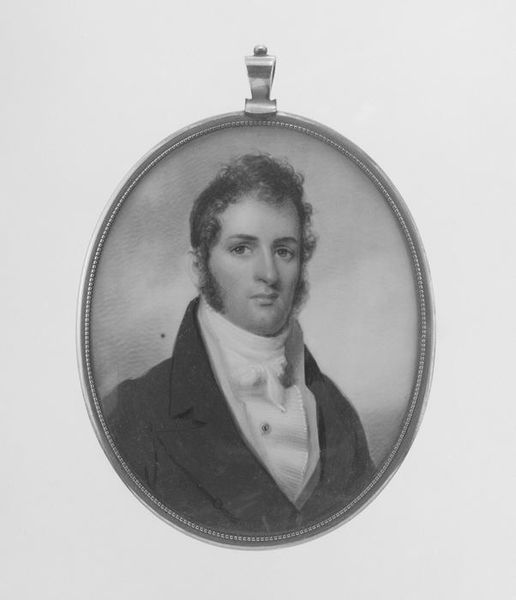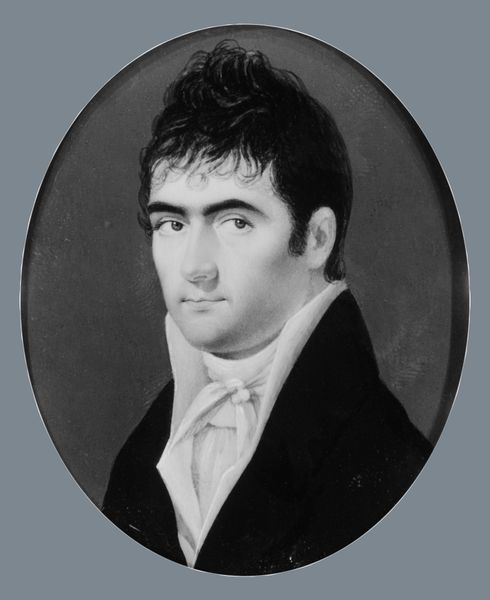
drawing, pencil
#
portrait
#
drawing
#
neoclassicism
#
portrait
#
pencil
#
academic-art
Dimensions: Sight: 2 7/8 x 2 1/2 in. (7.3 x 6.4 cm)
Copyright: Public Domain
Curator: Here we have Anson Dickinson’s pencil drawing, "Dr. Valentine Mott," created between 1817 and 1820. Editor: It has this really compelling seriousness to it. I mean, the color palette is constrained, but that focused gaze feels incredibly intense. Curator: The sharp contrasts enhance the sitter's facial structure, which conforms to a Neoclassical idealization, of course. It emphasizes rationality and composure. Editor: But consider who Mott was—a pioneering surgeon during a time of rampant disease and brutal medical practices. Is the formality of the portrait a way to legitimize a profession that was then deeply stigmatized and even dangerous for the patients themselves? Curator: The academic style certainly aimed for a universalized presentation, divorced from too much specific context or personality. Notice the delicate hatching used to model the face, a very controlled, almost mathematical approach to representing volume. Editor: That restraint reads very differently when you think about race and power during that period. As a prominent white surgeon, Mott's composure is inseparable from the societal advantages he held, literally shaping bodies while being upheld by systems of inequality. How complicit was Neoclassical portraiture in advancing racial hierachies of appearance? Curator: It’s tempting to read contemporary politics back into the past, but I want to suggest looking closer at the technical facility, at Dickinson's skillful manipulation of light and shadow to create an enduring image within the conventions of portraiture as a genre. Editor: I see your point. But I would say that an awareness of its social implications only enhances that endurance. It asks us to confront not just individual likeness, but how artistic representations bolster specific constructions of identity and social narratives across historical movements. Curator: Thank you. Your view of this portrait opens up further debate regarding the powerful, often unspoken relationships between art and society. Editor: Likewise. Reflecting on the intersectional dialogues that inform this drawing compels us to reimagine historical perceptions, acknowledging that our interpretation is not the final word but one offering of new perspectives.
Comments
No comments
Be the first to comment and join the conversation on the ultimate creative platform.
